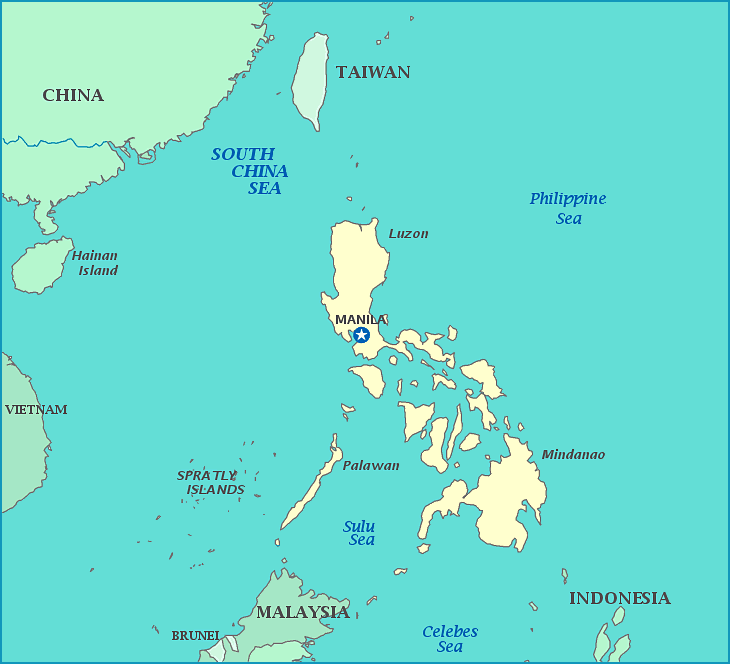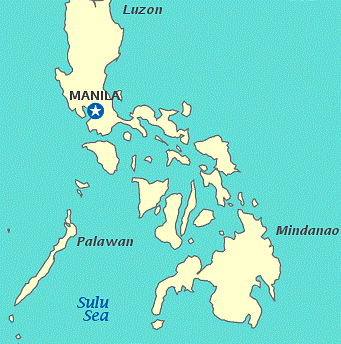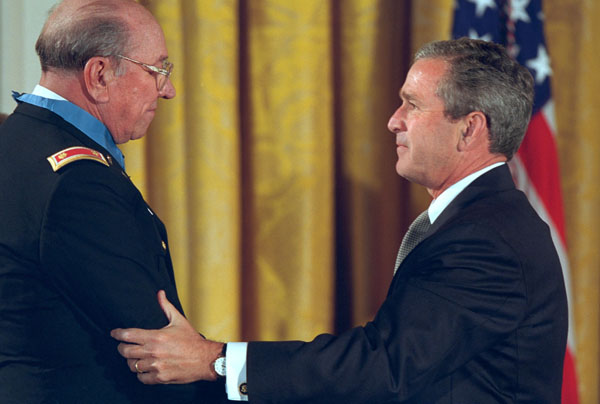The mountain? Suribachi
The island? Iwo Jima
The battle? WWII’s Battle of Iwo Jima
An American flag on a makeshift pole and six servicemen raising the flag of the United States of America
Of the six men pictured -
Michael Strank (26), Rene Gagnon (20), Ira Hayes (22), Franklin Sousley (20), John Bradley (22), and Harlon Block (21) - only three (Hayes, Gagnon, and Bradley) survived the battle.
 Strank was killed six days after the flag raising when a shell, likely fired from an offshore American destroyer, tore his heart out. Block was killed by a mortar a few hours after Strank. Sousley, the last of the flag-raisers to succumb in the battle, was shot and killed by a sniper on March 21, a few days before the island was declared secure.
Strank was killed six days after the flag raising when a shell, likely fired from an offshore American destroyer, tore his heart out. Block was killed by a mortar a few hours after Strank. Sousley, the last of the flag-raisers to succumb in the battle, was shot and killed by a sniper on March 21, a few days before the island was declared secure.Following the war, plagued with depression brought on by survivor guilt, Hayes became an alcoholic. His tragic life was memorialized in the folk song "The Ballad of Ira Hayes", written by Peter LaFarge and recorded by Johnny Cash in 1964:
Then Ira started drinkin' hard
Jail was often his home
They'd let him raise the flag and lower it
Like you'd throw a dog a bone!
He died drunk early one mornin'
Alone in the land he fought to save
Two inches of water in a lonely ditch
Was a grave for Ira Hayes
Likewise Rene Gagnon's last years were bitter and alcoholic before his death in 1979 at the age of 54.
Following the war, John Bradley was staunchly tight-lipped about his experiences, often deflecting questions by claiming he had forgotten. During his 47-year marriage, he only talked about it with his wife Betty once and never again afterwards. Within the family, it was considered a taboo subject.
Following Bradley's death in 1994, his family went to Suribachi in 1997 and placed a plaque (made of Wisconsin granite and shaped like that state) on the spot where the flag raising took place. At the time of his death, Bradley's son, James Bradley knew almost nothing of his father's wartime experiences. As a catharsis, James Bradley spent four years interviewing the families of all the flag raisers, and published Flags of Our Fathers, a definitive book on the flag raising and its participants.
Flags of Our Fathers
"On February 19, 1945, as part of their island-hopping strategy to defeat Japan, the United States invaded Iwo Jima. Iwo Jima was originally not a target, but the relatively quick fall of the Philippines left the Americans with a longer-than-expected lull prior to the planned invasion of Okinawa. Iwo Jima is located half-way between Japan and the Mariana Islands, where American long-range bombers were based, and was used by the Japanese as an early warning station, radioing warnings of incoming American bombers to the Japanese homeland. The Americans, after capturing the island, deprived the Japanese of their early warning system, and used it as an emergency landing strip for damaged bombers, saving many American lives.----------Wikipedia
Iwo Jima is a volcanic island, shaped like a trapezoid. Marines on the island described it as "a gray pork chop". The island was heavily fortified, and the invading United States Marines suffered high casualties. The island is dominated by Mount Suribachi, a 546-foot (166 m) dormant volcanic cone situated on the southern tip of the island. Politically, the island is part of the prefecture of Tokyo. It would be the first Japanese homeland soil to be captured by the Americans, and it was a matter of honor for the Japanese to prevent its capture.
Tactically, the top of Suribachi is one of the most important locations on the island. From that vantage point, the Japanese defenders were able to accurately spot artillery onto the Americans - particularly the landing beaches. The Japanese fought most of the battle from underground bunkers and pillboxes. It was common for Marines to knock out one pillbox using grenades or a flamethrower, only to have it begin shooting again a few minutes later after more Japanese infantry slipped into the pillbox using a tunnel. The American effort concentrated on isolating and capturing Suribachi first, a goal that was achieved on February 23, 1945, four days after the battle began. Despite capturing Suribachi, the battle continued to rage for many days, and the island would not be declared "secure" until 31 days later, on the 26th of March."





